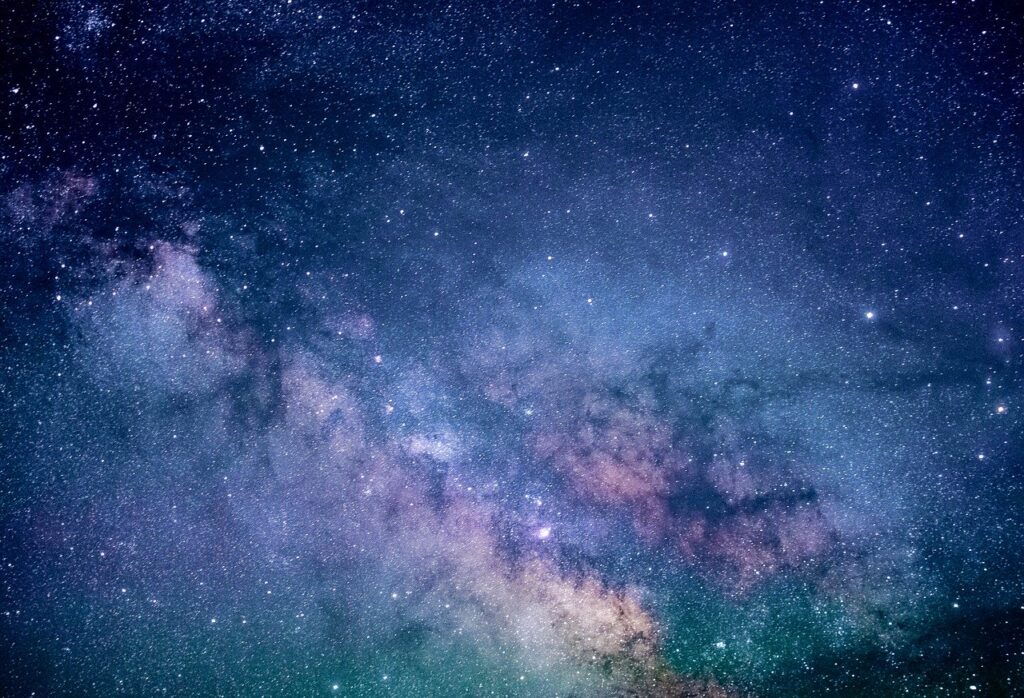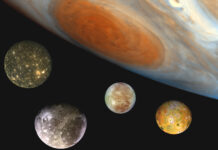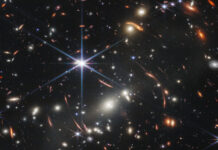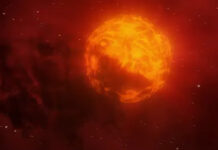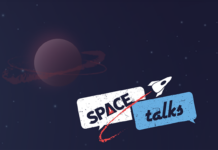The South Pole Wall and other colossi of our known Universe
The “South Pole Wall” is an unimaginably-large structure formed by countless galaxies and galaxy clusters. It is held by gravity in an arc-like shape that spans the night sky between the constellations Lepus and Apus. This path skirts by the celestial south pole as seen from Earth, and it has an elongate form, hence the name.

Credit: Dpomarede, CC BY-SA 4.0 https://creativecommons.org/licenses/by-sa/4.0, via Wikimedia Commons
This year, its full dimensions—1.4 billion light-years long— were finally observed. While still not quite the largest “wall” of its kind in the Universe (the Hercules-Corona Borealis Great Wall is apparently five times larger), the South Pole Wall is much larger than the Laniakea supercluster the Milky Way is a part of.
Laniakea is 160 million parsecs large, where a parsec is roughly 3.3 light-year. Laniakea also hosts the “Great Attractor,” an area of space that gravitationally attracts towards it everything within Laniakea. So far, scientists don’t know what exactly this object is.
Exomoons are a thing? And six new ones were found?
An exomoon is the equivalent of moons orbiting planets within our Solar System. But, instead, exomoons orbit around an exoplanet, which, in turn, orbits a star other than our Sun. Since planets in our Solar System boast moons, it makes sense that at least some exoplanets would harbour exomoons of their own. A paper by Chris Fox and Paul Wiegert, published this year, may have just found six such exomoons within six separate Kepler star systems.
Jovian J-1407 is one exoplanet that has been hypothesized to harbour at least one exomoon. J-1407 possesses a gigantic ring system with at least two notable gaps in said rings that might be caused by exomoons (as is typically the case with Saturn). This exoplanet also has a massive jovian rogue with apparent gravitational perturbations that suggest it to host an exoplanetary body of its own.
The six exomoons described by Fox and Wiegert were inferred from “transit timing variation (TTV)” data obtained from Kepler mission data. Researchers compared eight systems with the expected TTV of the moon and found six very compelling Kepler systems. These six star systems harbour at least one world that might, in turn, possess its natural satellite.
2020’s Most Intriguing Exoplanets
TOI-849b, discovered in 2018, is a world found to have a radius comparable to Neptune, yet also a density comparable to a rocky world such as Earth.
The fact that this exoplanet is just the core remnant of a once-jovian world may explain this discrepancy, proposes a paper published in the preprint server arXiv. Being very close to its host star, one possibility is that TOI-849b lost its original gaseous envelope. Another hypothesis is that the world never fully developed, to begin with, forming only its core and whatever scant (roughly 4% of its mass) gaseous material it managed to acquire.
What changes occur as one scales a planet from an Earth to a Neptune? What may lie in between them? According to a preprint published earlier this year by investigators at the Astrophysics Laboratory in Marseille, the transition between the two is a so-called “Supercritical World.” One possible example of such a world is K2-18b.
Such worlds may be comprised of a thick atmosphere with extremely deep oceanic “surface,” where the vast majority of the water of that ocean would reside in the “supercritical state” (where water behaves somewhere between a liquid and gas). So, the larger an earth-like world is, the more water it may acquire during formation.
Eventually, its mass becomes large enough to begin taking in more gaseous materials while its layer of water thickens and becomes more supercritical; finally, the atmosphere thickens to the point where a Neptune-like world results. That’s the theory, anyway, at least for worlds in the habitable zone, where water can usually sit as a liquid on a planet’s surface.
The “Chara” Star System
How many habitable worlds can fit into a single sun-like star system? Up to seven, potentially….
In July, researchers at the University of California published an article that reproduced orbital patterns of various planets in a fictional system. The study simulated a range of potential situations, including orbital spacing and the types of planets present in the system, from earths to jovians.
In the end, they found that five Earths can comfortably fit within a sun-like star’s habitable zone, but a maximum of seven is possible. So long as they’re all in near-circular orbits and the system lacks any worlds larger than a superearth.
Twenty-seven light-years from Earth sits the “Chara” (β CVn) system, in the constellation Canes Venetici. As of the present, no evidence of planets has been found in orbit around it. But it is still possible that this sun-like star boasts only rocky worlds…and even the hypothesized maximum of seven Earth-like worlds in its habitable zone. For now, though, the current favourite in this respect remains the TRAPPIST-1 system.
References
- Pomarède, Daniel, et al. “Cosmicflows-3: The South Pole Wall.” The Astrophysical Journal 897.2 (2020): 133.
- Tully, R. Brent, et al. “The Laniakea supercluster of galaxies.” Nature 513.7516 (2014): 71-73.
- Fox, Chris, and Paul Wiegert. “Exomoon Candidates from Transit Timing Variations: Six Kepler systems with TTVs explainable by photometrically unseen exomoons.” arXiv preprint arXiv:2006.12997 (2020).
- Armstrong, David J., et al. “A remnant planetary core in the hot Neptunian desert.” arXiv preprint arXiv:2003.10314 (2020).
- Mousis, Olivier, et al. “Irradiated ocean planets bridge super-Earth and sub-Neptune populations.” arXiv preprint arXiv:2002.05243 (2020).
- Kane, Stephen R., et al. “Dynamical Packing in the Habitable Zone: The Case of Beta CVn.” The Astronomical Journal 160.2 (2020): 81. (previously published in arXiv).
